
Join the tribe of Movement & Calisthenics Athlete – People just like you that are working with their own body weight to get strength, lose fat build muscle, recover from injuries and live their best lives!
Strong quads are strong legs.
Developing strong, thick, and powerful quads aren’t only for aesthetic purposes, it’s functional in specific, athletic activities and normal day-day movement patterns as well!
These best calisthenics quad exercises will help grow those quads without the assistance of any fancy equipment.
These bodyweight leg exercises can be done anywhere with no equipment needed, making them perfect for busy people who need to develop a powerful set of quads!
Read on and learn how these 10 go-to calisthenics quad exercises can help you get bigger and stronger quads!
What is the quadriceps?
The quadriceps femoris muscle group or more commonly known as the quads runs from the side, front, and inner thighs. It’s a large muscle group that has four major parts: the rectus femoris,vastus lateralis, vastus medialis, and vastus intermedius.
Because of its size, it’s also one of the most powerful muscles of the entire body.
The muscles start from the pelvis and run across the hip joint through the thigh bone. It’s connected to the knee cap and inserted into the shin bone.
It works soundly together with the other leg muscles to perform many basic movement patterns and exercises such as walking, cycling, running, jumping, and much more.
What are the benefits of quad exercises?
It’s already very much clear why training your quads are important, but here’s an even detailed list of what you can get from direct training of your quadriceps.
- Improve your kneecap stability
- Better jump height
- Stronger athletic performance
- Increase general leg strength
- Strong upper body development even backup up by research
- Improves balance and control
- More body composition
- Fixes potential quad weaknesses
- Lower your risk of developing knee osteoarthritis
- Increases overall leg mobility
- Better everyday movements from standing up, walking, bending forward, running.
- Better quality of life
10 best quad exercises you can do anywhere with no equipment
A solid leg workout won’t be complete without directly training the quads. Many of the exercises below work the entire legs, but mostly are quad-dominant movements or can be tailored to hit the quads more than the rest of the legs.
Get ready to get strong legs and say goodbye to the chicken legs that could have been plaguing your existence.
Warming up!
Before leg workouts or any type of bodyweight exercises rather, a proper specific warm-up is a must. This means targeting the specific muscle and pre-activating it to maximize performance in your calisthenics leg workout.
Squats
Bodyweight squats are a fundamental exercise in calisthenics leg training. Any bodyweight training wouldn’t be complete without this classic lower body exercise. It’s a must-have movement pattern for any skill level and has massive carry over to many skills and daily movements.
Even though bodyweight squats are commonly known for building a good-looking booty (gluteus muscles), this squat variation is actually a very quad-dominant exercise. For this reason, it’s at the top of our list of the most effective quad exercise.
When the bilateral bodyweight squat is too easy, you can increase the difficulty of the exercise by holding anything such as a book, a heavy bag that can act as a weight. Just be sure that form isn’t compromised in doing so. If you’re not interested in implementing “weights”, then proceed to the one-leg squat progression.
There are a ton of squat variations for different purposes so expect other forms when learning more bodyweight leg exercises.
How to perform:
- Begin in a standing position with feet shoulder-width apart. Have a good posture.
- Bend your knees and lower down below 90-degrees while simultaneously raising your arms forward for counterbalance.
- Push back up to the starting position.
- Repeat for reps.
Coaching pointers:
- Keep your core muscles engaged
- Lower into a straight line leading with your hips
- Drive your hips forward when standing back up
- Maintain nan upright torso
- Keep your feet flat on the ground
- Lower down until your mobility permits. You can decrease the range of motion or hold something for assistance when beginning.
Pistol squats
If already have good lower body strength and mobility, then you can pursue pistol squats for complete lower body development. Although pistol squats have heavier glute activation, you can recruit the full lower body muscles from this exercise alone.
The pistol squat Aka one-leg squats pistol squat is a move that doesn’t only challenge leg strength in a unilateral fashion but also requires a high demand for ankle and hamstring mobility to perform the movement in a complete range of motion.
Since the exercise is unilateral, you get to fix any imbalances between the left leg and right leg. Mastery of your own body weight is a must in order to perform this advanced movement pattern.
How to perform:
- Stand straight on one leg while keeping the non-working leg forward.
- Lower down by bending your knee until your glutes are close to the ground.
- Push back up to the starting position.
- Repeat for reps.
- Switch legs and repeat the motion for reps.
Coaching pointers:
- Keep abs tight
- Front leg straight for balance and just hovering over the ground
- Standing leg slight bend at the top position
- Working knee tracks over the middle of the foot
- Full range of motion when hip drops below the knee
- It’s okay to allow the knee to move forward the toe
- Don’t forget to train the opposite leg after one set
Bulgarian Lunges
Also known as Bulgarian split squats, this exercise is an amazing unilateral exercise and also part of the pistol squat progression. It’s basically a lunge with your other leg elevated to lessen the load assistance from your non-working leg but still provide your balance.
All you need is a chair, bench, or low table to perform the exercise.
This is a compound exercise that can build your quads but can also be adjusted to target more of the glutes if you need to.
How to perform:
- Begin in a standing position with the back facing an elevated surface.
- Place one foot on the elevated surface and the working leg with a slight bend at the top.
- Lower down your back knee close to the floor by bend bending down with your front leg.
- Push down with your forward leg to achieve starting position.
- repeat for reps and switch legs.
Coaching pointers:
- Let the front knee travel past the toes
- Elevate foot between shin to mid-thigh height
- Keep your torso upright to maximize quad activation
- Non-workling leg’s toes resting on the surface. You can place the top of your foot or toes itself on the surface based on what’s comfortable to you.
- Feel the stretch in your hip flexors as well
- Engage your quads when especially when standing back up again
Bodyweight quad extensions
Here’s one of the most underrated lower body bodyweight exercises of all time!
Quad extensions have the same movement pattern as your traditional quad extension machine, but they stretch your quads more which also improves your quad mobility and flexibility to a greater degree.
Do this exercise after your main compound exercise (pistol squats, squats, step-ups). It can be a finisher for your quads in your calisthenics leg workout.
How to perform:
- Begin in a kneeling position with legs hip-width apart. Upright upper torso and core engaged.
- Raise your arms in front of you for counterbalance.
- While hinging at the hips and maintaining a straight torso, lower your body backward slowly.
- Pause at the bottom for a few seconds.
- Reverse the motion but stop just before your body hits a 90-degree angle.
- Repeat for reps.
Coaching pointers:
- Don’t reset to full vertical when rising back. Maintain a slight lean to maintain quad activation
- Lower down as your current strength and mobility permit
- Don’t hinge at the hips
- Posterior Pelvic Tilt
- Hips fully extended
- Upper body in a neutral position
- If too difficult, use bands or hold something with your hands for added assistance.
Side-split squats
A great way to develop your quads and your legs, in general, is to hit them all at different angles.
The side-split squat, also known as the cossack squat, is a unilateral exercise that trains your movement in the frontal plane which is the side-to-side movement. This is a great way to prevent and injury and imbalance since most of the movements we do are in the sagittal plane such as the regular squats for example.
The unique squat position is in a half split stance that provides supreme calisthenics leg mobility perfect for staddle exercise body positions. You can also use this exercise to progress towards side split just in case you’re interested.
How to perform:
- Stand with good posture with legs wider than shoulder-width apart.
- Shift your weight to your left leg and simultaneously lift your right toes while your right heel is still planted on the ground.
- Bend your left knee to lower your body into a lateral lunge while keeping your right leg straight and your right heel planted.
- From the bottom position, push back up by driving down your left foot so you can back to the starting position.
- Repeat for the motion for the other leg.
- Repeat for reps.
Coaching pointers:
- Wide straddle stance
- Feet pointing slightly outwards
- Knee out on the squatting leg
- You can adjust the intensity of the exercise by modifying the range of motion, tempo, adding pauses, or adding weights
Jump Squats
In terms of getting stronger legs, you should also implement from time to time an explosive movement in your exercise regimen.
Squat jumps are highly effective in developing your legs as it hits all the lower body muscle groups including your calves. You’re basically doing calf raises in a powerful manner if done correctly.
Add to your training regimen for that calisthenics power and explosiveness which is useful to increase your jumps, running, cardiovascular capacity, and even burn calories more than you normally would due to the aerobic component.
You can use also other plyometric exercises such as hill sprints, and sequences of plyometric jumps or jumping lunge to spice up the exercise while still developing your legs.
How to perform:
- Begin in a standing position.
- Squat down to generate momentum.
- Explosively jump vertically from the squat position.
- Land to the floor heading straight to squat by controlling your way down.
- repeat for reps.
Coaching pointers:
- Jumping lunges for added intensity or simply increasing the level of your jumps
- For an easier variation, minimize your effort to jump to suit your current skill level
- Immediately bend your knees to catch your own bodyweight safely and absorb the momentum
Skater squat
This exercise is of the least popular bodyweight leg exercises but can deliver results. It’s basically a single leg lunge with very minimal assistance from the other leg.
How to perform:
- Begin in a standing position with arms in front of you.
- Lift one leg backward and keep it bent so that your knee will only touch the ground when it’s on the floor and your knees will still be off the floor.
- Shift your weight backward and bend your working knee to execute the lunge.
- Stop when the non-working knee reaches the floor.
- Slightly lean forward and use the quads to stand back up into starting position.
- Repeat for reps then repeat on the other side.
Coaching pointers:
- Arms in front for counterbalance
- Upper torso upright
- The full range of motion is knee on the ground
- Minimal assistance from non-working leg
- Slight knee bend at the top position
- Avoid using momentum
- Keep your knee moving vertically and caving inward or moving outward
- Shift your weight backward when lowering
- When strong enough, just let the non-working knee tap the ground then proceed to complete the range of motion
Wall Squat
Implementing an isometric hold into your leg workout completes your quad development. Not only it helps add volume to your training, but it also builds muscular endurance strength as you move to longer hold periods.
Wall sits AKA wall squats are a must-have exercise if you’re interested in strong, big, and powerful quads.
How to perform:
- Stand with your back against the wall.
- Lower your body down by moving your feet forward until your quads are parallel to the ground. Knees bent.
- Hold the position for a specified amount of time.
Coaching pointers:
- Move to one leg wall squats for added intensity
- Actively contract your quads
- Posterior Pelvic Tilt
- Quads parallel to the ground
- Shin vertical
- Don’t use your hands to create assistance for your legs
Step-up
The step-up movement is similar to a single leg squat but is less demanding on the mobility requirement compared to a pistol squat and requires less balance which is why it’s great for overloading your leg muscles as you can focus on hypertrophy instead.
You don’t need to be fancy with your equipment. All you need is sturdy furniture to perform the exercise.
How to perform:
- Step one foot on the elevated surface. Raise your arm for balance.
- Drive your working leg onto the elevated surface and just let the back leg float off the floor.
- Continue pushing with your working leg until you reach the top position.
- Lower down with control.
- Repeat for reps then do the other side.
Coaching pointers:
- Let the knee move past the toes
- Straight posture and upright
- Control the movement throughout the range of motion especially for the eccentric part
- Don’t let the knees cave inward
- Working foot flat on the surface
- Don’t bounce off the ground using the back foot
Sissy squat
Sissy squats are one of the most controversial calisthenics leg exercises in the fitness community. Sissy squat has such a bad rep because they say it’s bad for the knees due to the knee moving past the toes.
Let me tell you that it’s only bad if you’re not strong or mobile enough to do the movement.
This quad-specific squat even strengthens the knees if done correctly and using the progression that safely challenges your skill level.
How to perform:
- From a standing position with good posture, drive your knees forward.
- Push down through the balls of your feet to stand back up.
- Repeat for reps.
Coaching pointers:
- Full hip extension
- Partial bend at the knee at the top position
- Allow the knee to move forward past the toes
- Adjust the difficulty by modifying the range of motion, or getting assistance
- Don’t arch your lower back
- Raise arms forward for counterbalance
- Lower down with control
Summing up
To gain stronger, you also need to practice proper recovery habits and good nutrition as well.
It’s not vital to incorporate every movement in the list to your exercise routine, but it’s best to cycle them throughout your training programs while including various leg exercises that target the other leg muscles such as using calf raises for calves, nordic curls for hamstrings, and using 1 lunge variation that’s glute dominant.
Partner your powerful upper body with a structured bodyweight leg workout to build you a complete functioning body.
Get complete calisthenics training with proper leg workouts that are personalized for you. Cookiecutter works aren’t going to cut it.
Begin the journey with an assessment so the program can structure it based on your goals, and current skill level.
TAKE THE ASSESSMENT NOW!

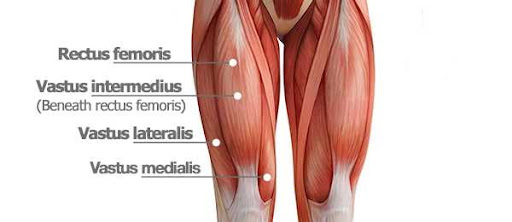
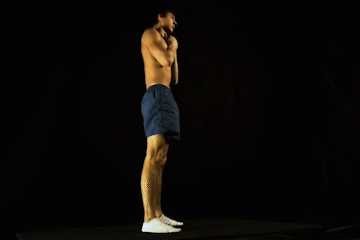
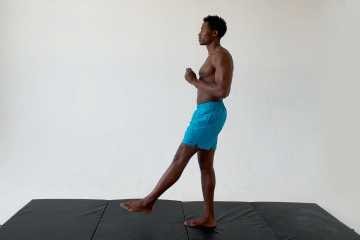
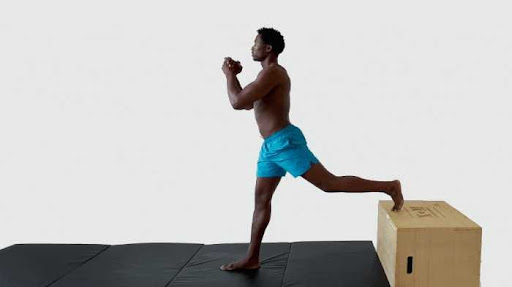
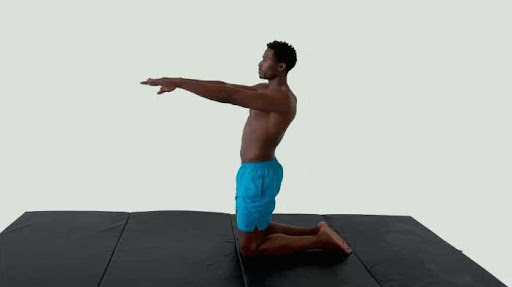
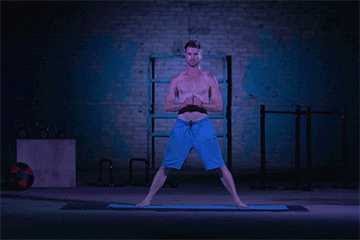

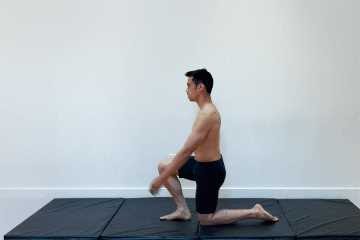



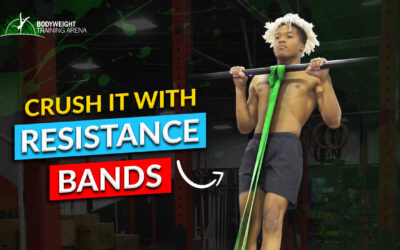
0 Comments